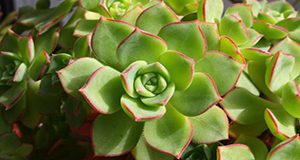Consumer demand for indoor foliage plants is decreasing. One strategy to counter decreasing demand is to align products with consumer needs. To explore this strategy, this 4-page fact sheet written by Hayk Khachatryan and Alicia Rihn and published by the Department of Food and Resource Economics examines purchasing barriers for indoor foliage plants so that breeders, growers, suppliers, and retailers may develop and promote products to overcome those barriers. This paper also investigates the potential of using novel plant attributes that are not readily apparent in retail outlets to generate consumer interest in indoor foliage plants.
http://edis.ifas.ufl.edu/fe994
Tag: Foliage Plants
ENH1168/EP429 Cold Protection of Foliage Plants in Shadehouses and Greenhouses
ENH1168, a 10-page illustrated fact sheet by Robert H. Stamps, Jianjun Chen, Seenivasan Natarajan, and Lawrence R. Parsons, informs ornamental foliage plant growers about various cold protection measures that can be adopted before and during cold events to avoid or minimize losses due to chilling or cold injury. Includes glossary and references. Published by the UF Department of Environmental Horticulture, July 2010.
http://edis.ifas.ufl.edu/ep429
ENH1093/EP357 Tropical Foliage Cultivar Development: New Ornamental Introductions Drive Plant Markets
ENH-1093, a 3-page illustrated fact-sheet by R.J. Henny and J. Chen, looks at foliage cultivar development and markets through history. Includes references and a table chronicling changes in major foliage plant genera in commercial production between 1975 and 1999. Published by UF Department of Environmental Horticulture, January 2008.
http://edis.ifas.ufl.edu/EP357
ENH1092/EP356 Tropical Foliage Plant Development: Origin of New Cultivars
ENH-1092, a 5-page illustrated fact sheet by R.J. Henny and J. Chen, describes three avenues for new tropical foliage plants to enter the commercial trade — plant acquisition and collection from the wild, selection of natural or induced mutations, and hybridization — and how new introductions are evaluated. Includes references. Published by the UF Department of Environmental Horticulture, January 2008.
http://edis.ifas.ufl.edu/EP356
